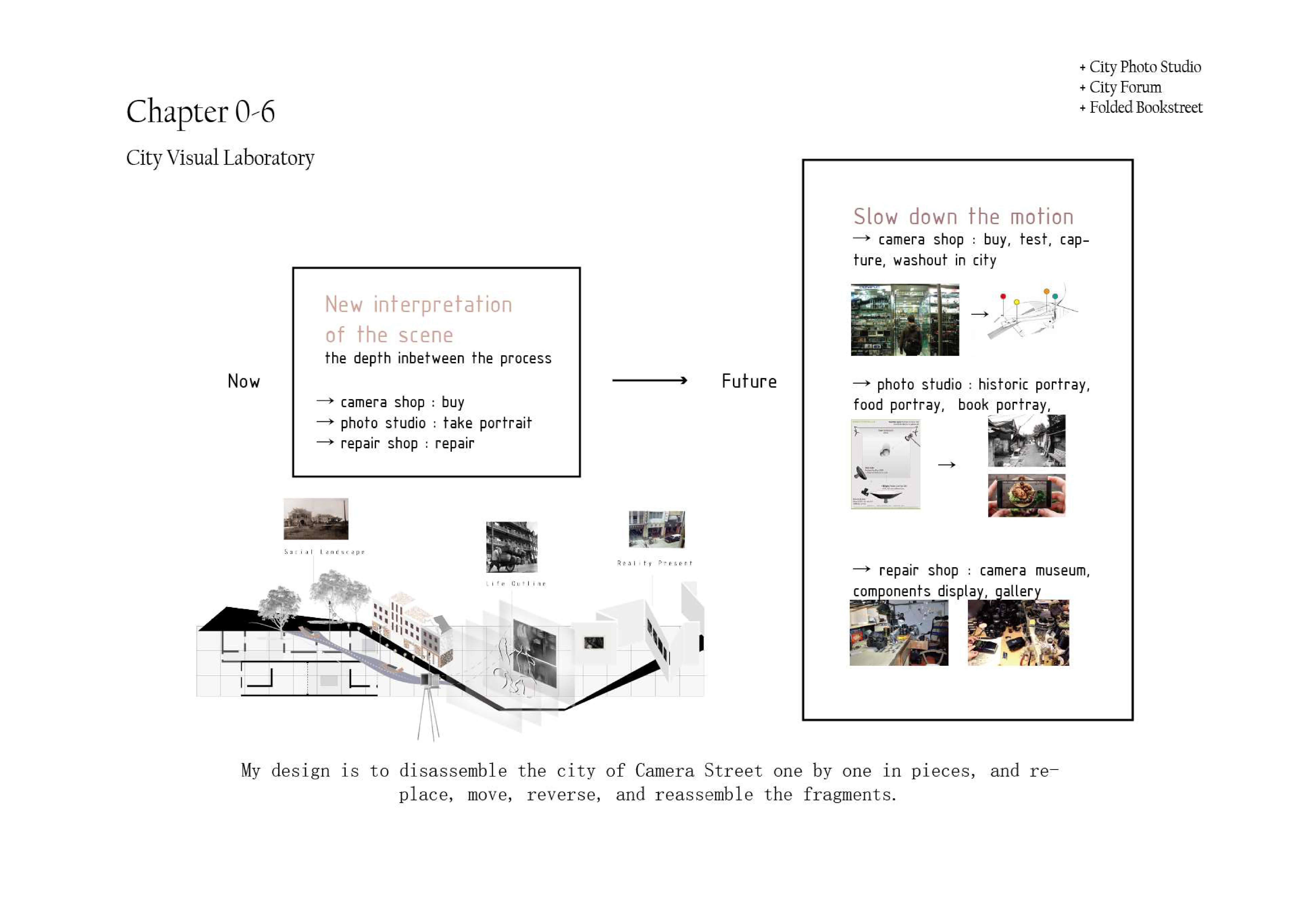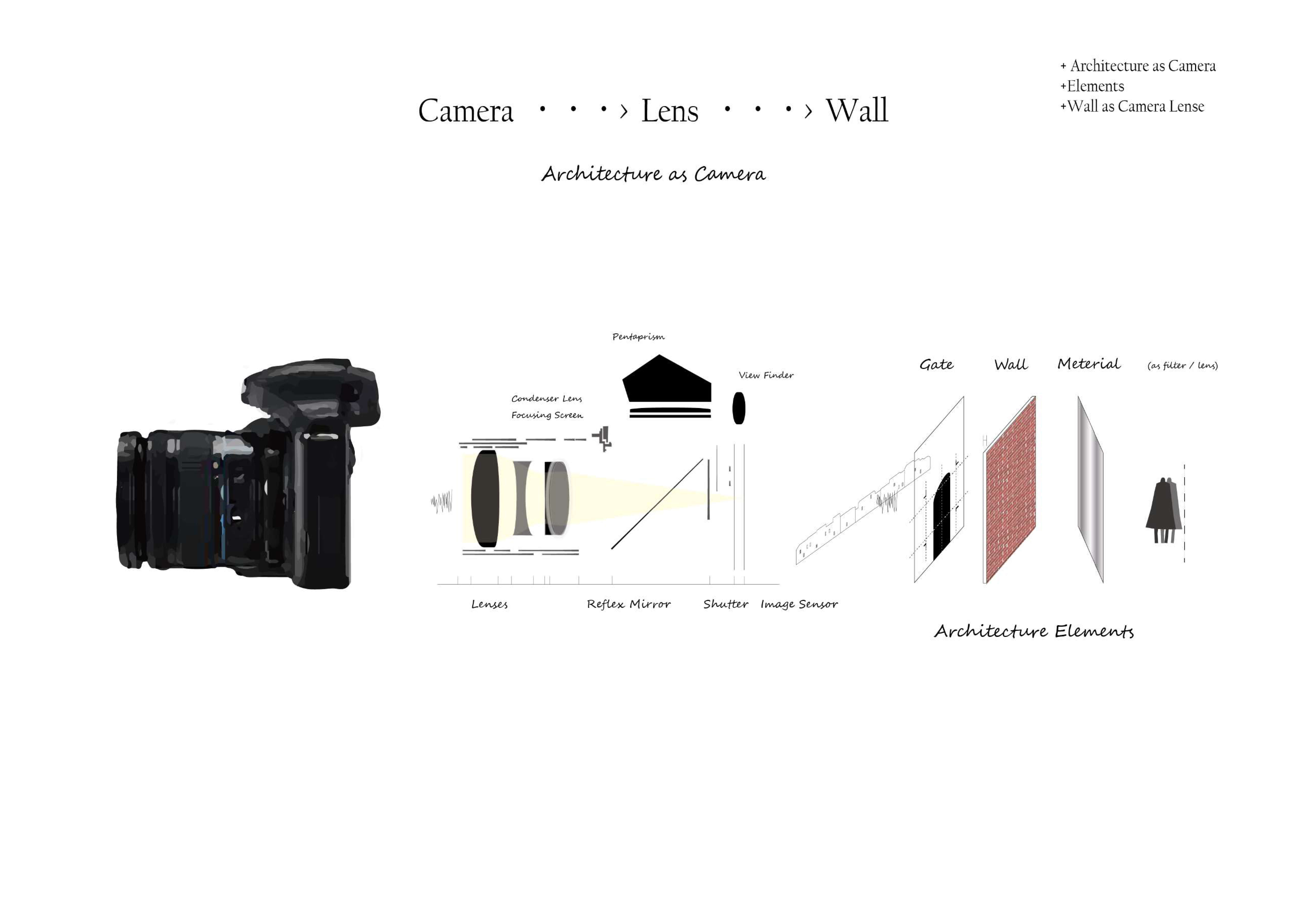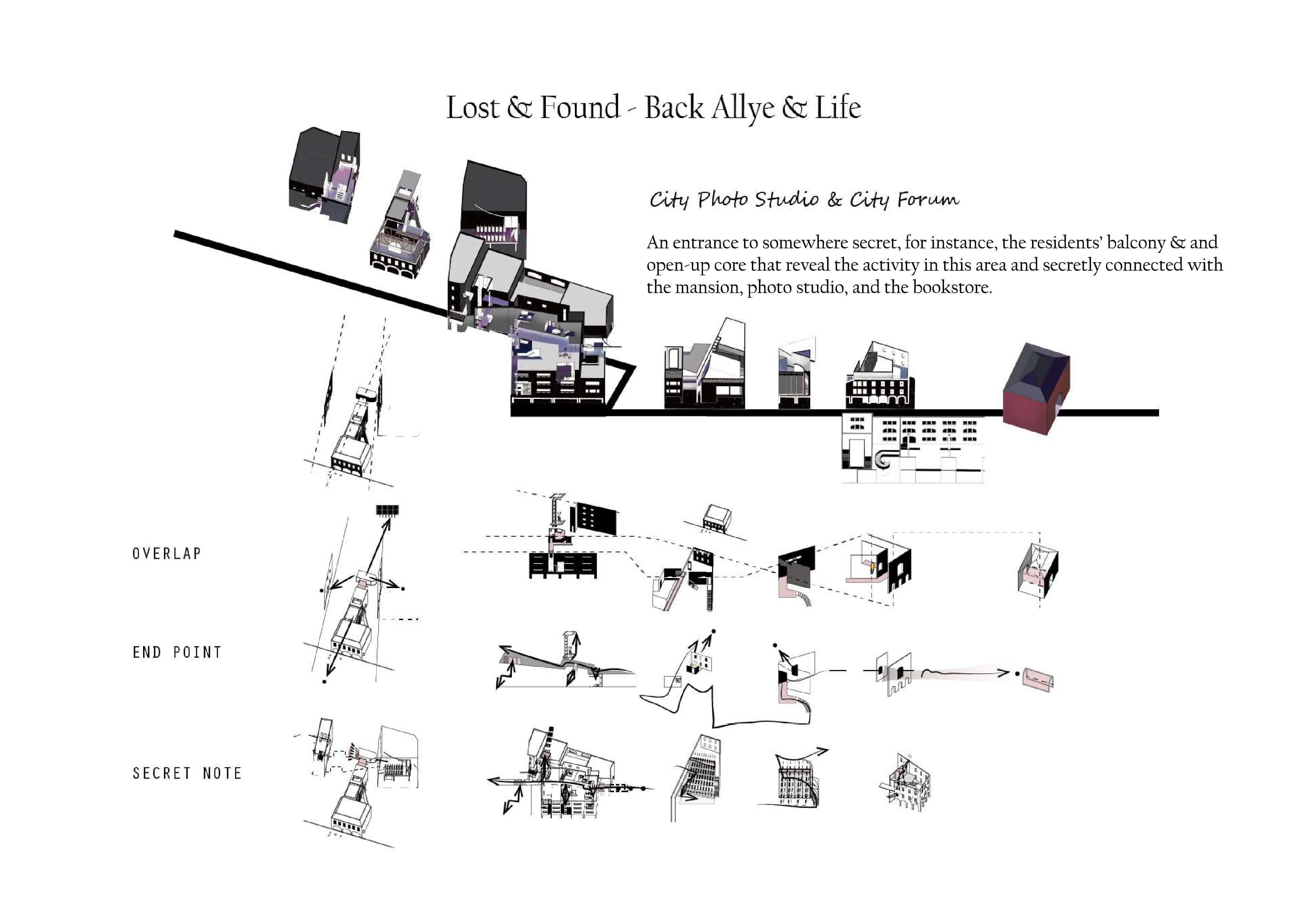





失誤招領 – 相機街的不可見事件
台灣 / taiwan
李映玫 / Yin-Mei Lee
失物招領處,是個保存遺失物的場所。當人們發覺自己在意的事物丟失時,這個場所就對你我產生了意義。
城市與人一樣,在複雜中不斷變動。如同所有進步的城市一樣,台北城中的相機街也在不斷的擴張中蛻變、衰演,直至今日。相機街位於北門正對面,介於中華路與重慶南路之間,他見證了台北城中最重要的三條街道:中華路上的鐵軌與中華商場、重慶南路騎樓下的書街以及相機街的興與衰。此地紀錄了台北城的地景、生活實貌,然而,因為科技的日新月異與手機市場興起,使得拍攝這件事變得稀鬆平常,讓相機街的定位逐漸式微。於是我開始思考如何樣再詮釋它的價值。
相機街的種種不可見事件,形塑了人心中那條因歷史軸線而被分割的相機街。它曾經是大人物小姐的舞台、郵局行員的天台,而今成為小說家的幻想、中學生的想像。我的設計是將建築轉譯成相機,於每一道牆的切片中間所包裹的是相機街的日常、慾望、印象、回憶,既是延續歷史紋理又因時間分割碎化,在陰暗與光亮的串聯中讓四個角色感受到那些在相機街中看不見的城事。
Some people say that cities are attractive because people’s life reflect their value. So, what is left when people are gone? Are there any spatial events that are ignored in the cities? “Lost and Found” is a place to keep lost items. When people find that the things they care about are missing, this place starts to have meanings.
Cities are like people, are constantly changing with complexity. Like all progressive cities, Taipei City has been declining and decaying with its continuous expansion until today, too. My design is located at Camera Street, inbetween Chonghua Road & Chongching S. Road. This place used to be the stage of Mrs Celebrity and the playground of the teller, but now it has become a novelist’s fantasy and a middle school student’s imagination due to the change of “taking photo process”.
My design is to make “Architecture as Camera” in which to disassemble the city of Camera Street one by one in pieces, and later replace, move, reverse, and reassemble the fragments. Therefore, in between each wall (lens), the desire, impression, and memory of Camera Street will be disclosure by people through circulation. The historical texture will reflect by different materials and angles, which makes the four characters feel the invisible cities through darkness and light.
More Projects of this Session
展區其他作品